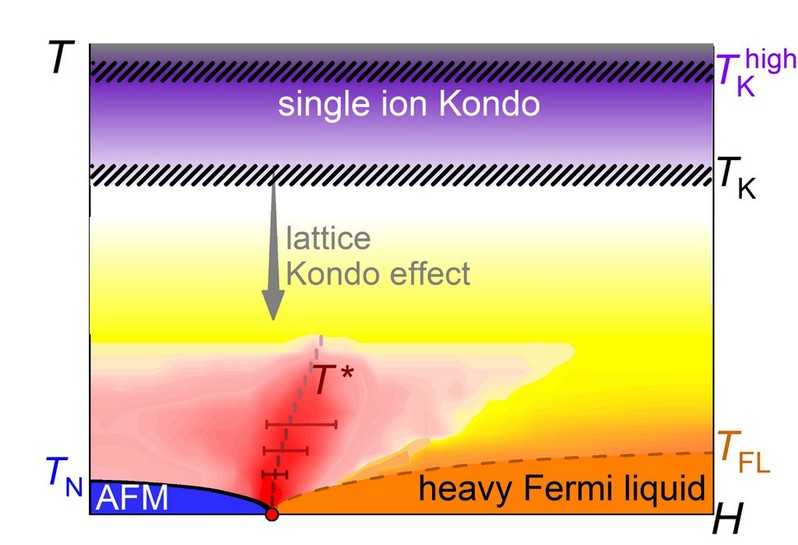Editor: 周婷 Time: 2020-03-12 Number of visits: 325
Electronic correlations give rise to a plethora of interesting phenomena and phases, including magnetism and superconductivity. One particularly intriguing example is the hybridization between localized (often 4f) and conduction electrons in so-called heavy fermion materials. Here, the hybridization may result in the generation of low-energy scales that can induce quantum criticality and unconventional superconductivity. Today, the suppression of an order parameter by a non-thermal, experimentally controllable variable like pressure, is an established route towards high-temperature superconductivity through which quantum criticality has gained a new impetus.
Quantum criticality itself, however, turned out to come in different manifestations. Specifically in transition metal compounds, quantum criticality can usually be discussed within a scheme of itinerant, i.e. spin-density wave, order. Yet, other materials defy such a description, as unequivocally shown by inelastic neutron scattering experiments on CeCu5.9Au0.1. Here, a novel picture was called for, going substantially beyond the Landau framework based solely on order-parameter fluctuations.
The present article published in Rev. Mod. Phys. reviews the recent progress made in this perplexingly complex research field with seemingly conflicting input. Intimately tied to any theoretical progress is the quest for new experimental insight. Photoemission is a direct means of determining the band structure of solids. It thus has the potential to give momentum-resolved information on the one-electron Green function. The main issues in applying this technique to the f-electron systems has not only been in reaching the required low temperature but also in obtaining sufficient energy resolution. On the other hand, Scanning Tunneling Spectroscopy provides access to the one-electron Green function with sufficient resolution but due to quantum interference effects the interpretation of the measurements can be complicated. Results obtained by both experimental techniques on the two archetypical (classes of) compounds, YbRh2Si2 and CeMIn5, are critically evaluated.
It is this tight interplay between recent theoretical and experimental advances, with emphasis on the one-electron Green function of Kondo systems, on which this review focuses while providing a broader base for ongoing discussions and open issues. As such, this Colloquium article is most timely, and certainly presents a profound and valuable overview of the current aspects and literature in quantum criticality of condensed matter.

Phase diagram of a local quantum critical metal.
The published article is available at https://journals.aps.org/rmp/abstract/10.1103/RevModPhys.92.011002

Add: No. 8 Hainayuan Building, Zijingang Campus, Zhejiang University, 866 Yuhangtang Rd, Hangzhou, 310027, P.R. China
Tel: +86-571-87953325
Fax: +86-571-87951895
Email: yongyi@zju.edu.cn